Himalayan Brown Bear: Largest Mammal In The Himalayas

The Himalayan brown bear is one of the subspecies of brown bear that is found in the Western Himalayas. It is also known as the Himalayan red bear or isabelline bear. While male bears are the largest animals in the area, female bears are somewhat smaller in size. The bears feed on both meat and plants. Hence, they are omnivorous in nature. As do many bears, these Himalayan brown bears also hibernate during the winter.
Similarly, sexual dimorphism is very common among Himalayan brown bears. This means that the bears from the same species possess different characteristics with association to their morphism regardless of their sex. Therefore, even though some Himalayan brown bears are of the same sex, they can possess varying characteristics.
Make sure to read till the end of this article to know more about Himalayan brown bears!
What is a Himalayan Brown Bear?
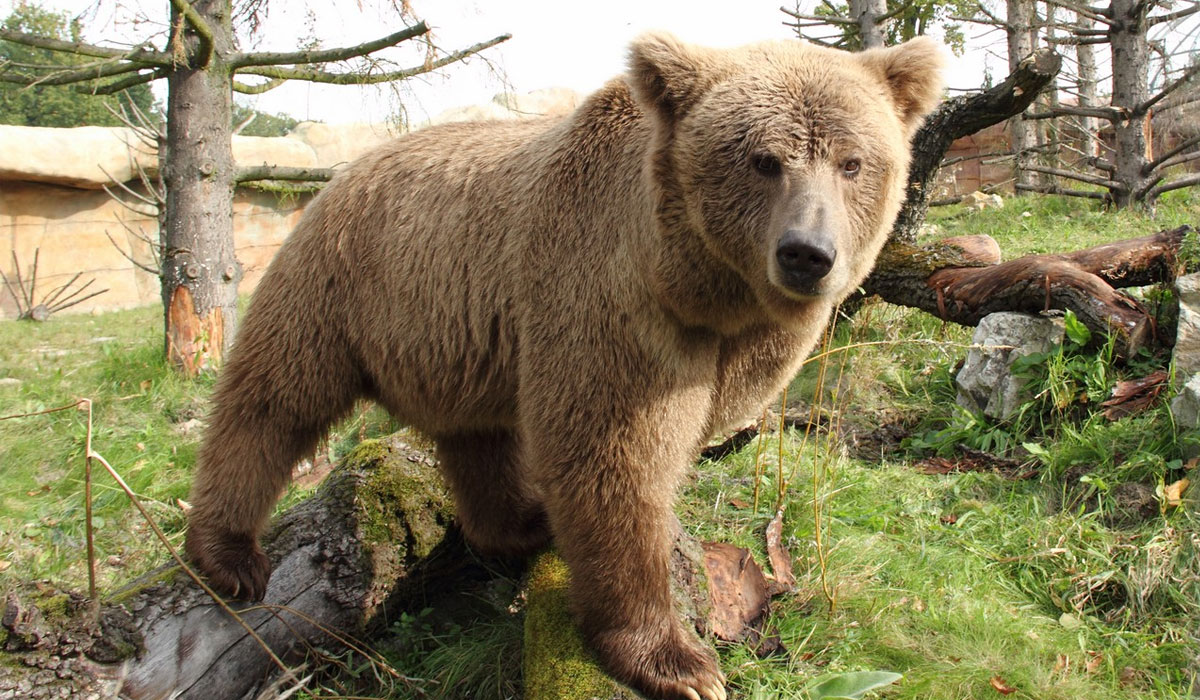
A Himalayan brown bear is a subspecies of brown bear that is found in the Himalayan parts of the western region. These bears are very much like other brown bears. Since they are found only in the mountainous regions, you will rarely find them in any other parts of the world besides the Himalayan regions. The male bears normally possess a size of 1.5 to 2.2 m (4 ft 11 in to 7 ft 3 in) long. And the females are smaller at sizes ranging from 1.37 to 1.83 m (4 ft 6 into 6 ft 0 in) long.
They are also known as Himalayan red bears, given they are brownish-red or sandy in color. These bears have origins in South Asia’s mountains and can be commonly spotted in the Himalayas in Nepal, Tibet, Pakistan, Bhutan, and India. Likewise, you are unlikely to find these bears in crowded areas, even in the mountains of these countries, since they are only found in isolated places.
Since they possess the behavior of omnivorous animals, they feed on both plants and animals. They usually prey on other herbivorous animals like sheep and goats. However, they also feed on berries and fruits that they find in their habitat. They have the habit of eating before the sun rises and after it sets.
Where are Himalayan Brown Bears found?
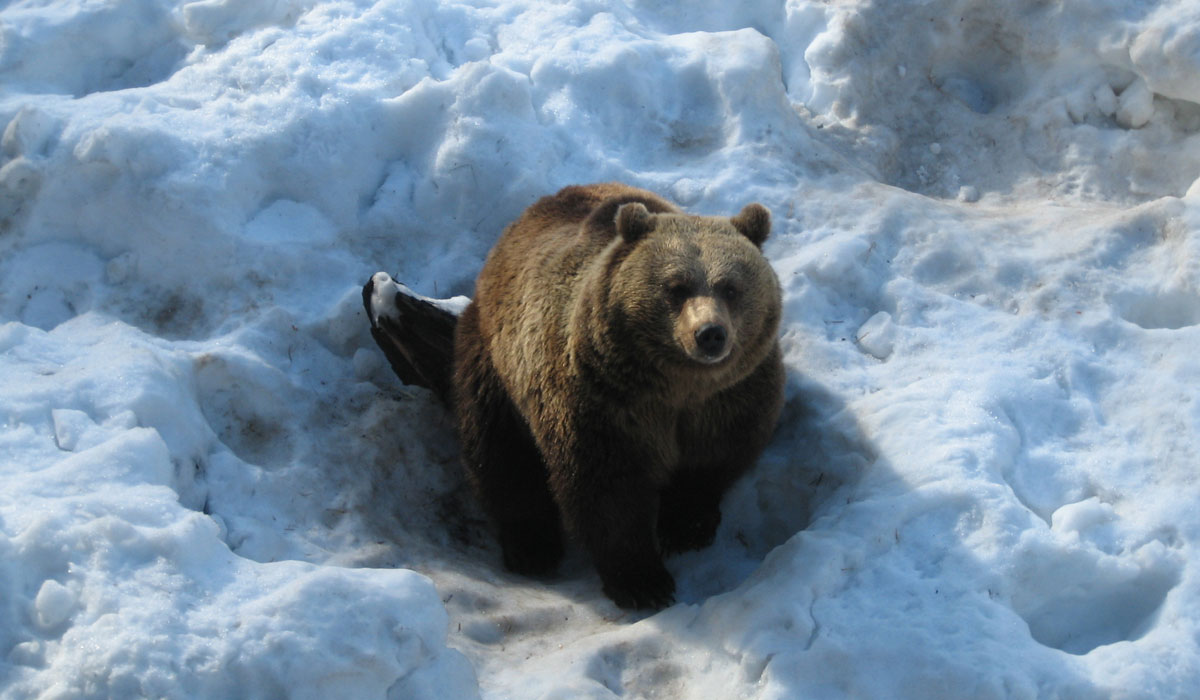
Himalayan brown bears are found in the Himalayan region of South Asia, especially in countries like Nepal, Tibet, Pakistan, Bhutan, and India. While you will find plenty of brown bears in Eurasia and North America, this subspecies of bears is rarely found in any other places of the world besides the Himalayas.
Some of the most common places where you can spot the Himalayan brown bears would be the Indian states of Jammu and Kashmir, Himachal Pradesh and Uttarakhand, Central Nepal, the Karakoram Mountains, and the Tibetan Plateau.
These bears hibernate during the month of October. They are active and up after April or May. They usually hibernate in caves or dens. The Himalayan brown bears are capable of making a den for themselves, especially for the purpose of hibernation.
Evolution of the Himalayan Brown Bears
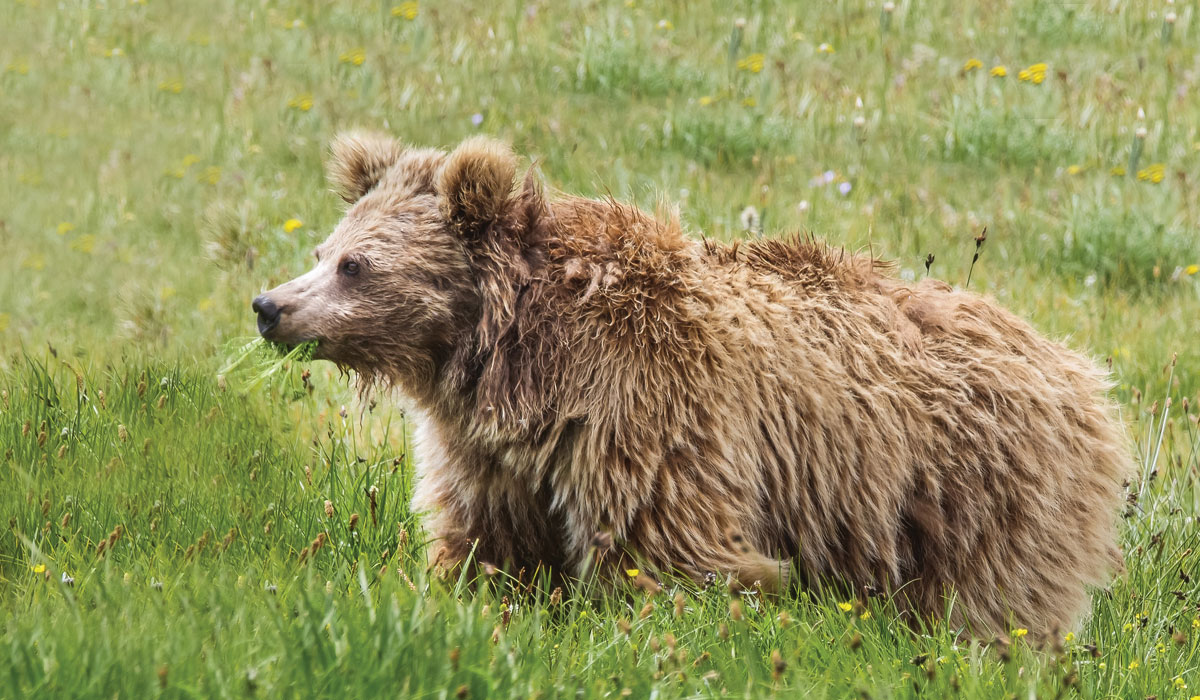
The evolution of the Himalayan brown bears started early on around 658,000 years ago. It matches with the period of a Middle Pleistocene episode of glaciation on the Tibetan plateau. The Nyanyaxungla glaciation can be very much regarded as a responsible factor for the evolvement of Himalayan brown bears. The bears were isolated from the start, which also justifies why they have been diversified.
These brown bears, to a great extent, show close relations with the Gobi bear, polar bear, and other brown bear.
Himalayan Brown Bears and Yeti
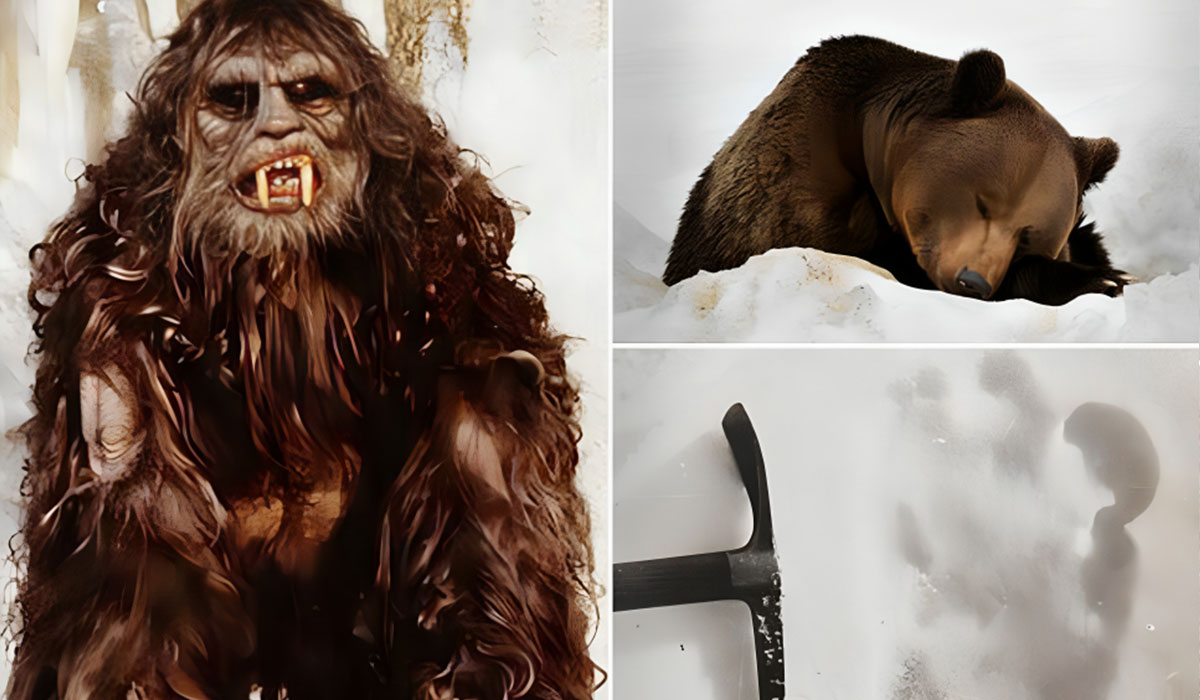
The Himalayan brown bears are large mammals found in the Himalayan region with small eyes, long snoot, and stocky limbs. They also have a very big head. This further gives rise to people’s suspicions of them being responsible for the footprints that have been otherwise thought of as belonging to mythical beings, Yetis. The existence of Yeti is still a mystery. However, since the bears are also only found in the Himalayas, along with the suspicion of the presence of Yeti in the same area, it is very much possible that the Himalayan brown bears have been, to a degree, responsible for the marks of “Yetis.”
“Dzu-Teh” is a Nepali term that has been considered to be a name for Yeti. Daily Mail’s Abominable Snowman Expedition of 1954 has shown evidence of having found the existence of Yeti in the Himalayas. Upon DNA tests, it was found that it matched not with an unfigurable being but with that of the Himalayan brown bear.
Future of Himalayan Brown Bears
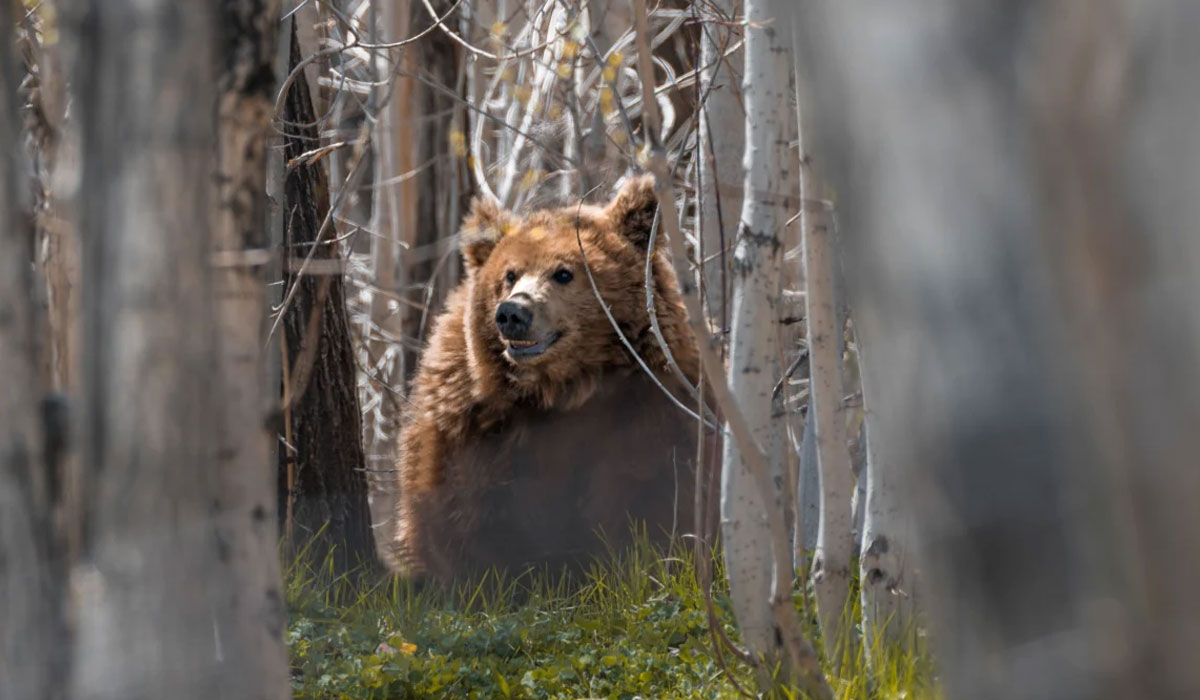
The growth of population, even in the Himalayan regions, along with the extensive threats of modernization and commercialization of the Himalayas, has posed a threat to the presence of Himalayan brown bears. These bears are known to be in excluded areas with very little probability of human interruption. Sadly, times have changed, and there aren’t as many isolated areas as there were in the past.
Poaching the Himalayan brown bears for furs and claws is just as common. People either use their bodily parts as ornaments, decorative items, or for medicinal purposes. With the growth in human habitation in the Himalayas, shepherds are also killing them in order to protect their sheep and goats. This way, the natural process of the wild lifestyle has been very much hampered by human beings.
Buransh tree, especially found in the Himachal region, is their natural habitat. Sadly, even these trees are being cut more frequently than ever. Moreover, research on the areas in the Himalayas where military conflicts have been taking place for several years shows that there have been across-the-border movements of these species of bears.
On the other hand, Deosai National Park in Pakistan is known to have the largest population of Himalayan brown bears. Similarly, the Himalayan Wildlife Foundation in Pakistan has been planning a different management plan for Deosai National Park, promoting ecotourism in the area. With much effort to protect the Himalayan brown bears, it is possible for the governments of the countries with Himalayan mountains to keep them from going extinct.
Frequently Asked Questions (FAQ)
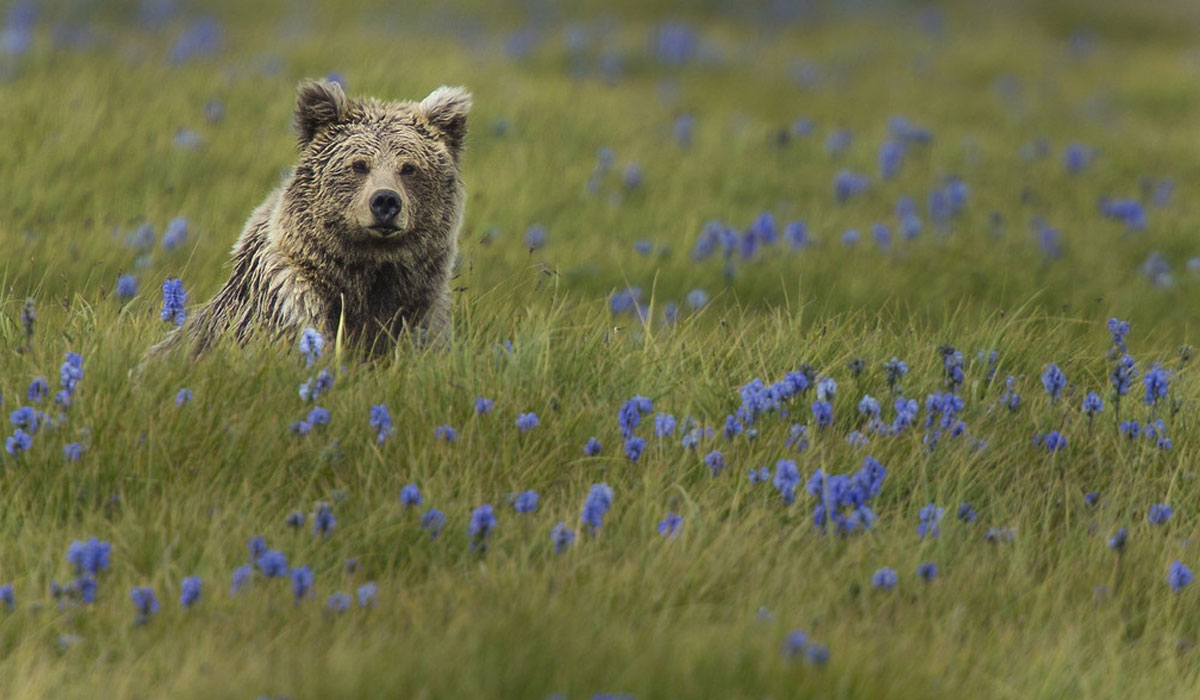
Are there brown bears in Nepal?
The Himalayan region in Nepal has a great population of Himalayan brown bears.
Is the Himalayan brown bear rare?
Himalayan brown bears are rare to find in any other areas besides the South Asian Himalayas.
What is a Himalayan brown bear of Ladakh?
The Himalayan brown bear of Ladakh is Ursus arctos.
What kind of bear is in Nepal?
The Himalayan Brown Bear (Ursus arctos) is in Nepal.
Are Himalayan brown bears aggressive?
Like any other species of bears, Himalayan brown bears can be aggressive.
Also, read;




